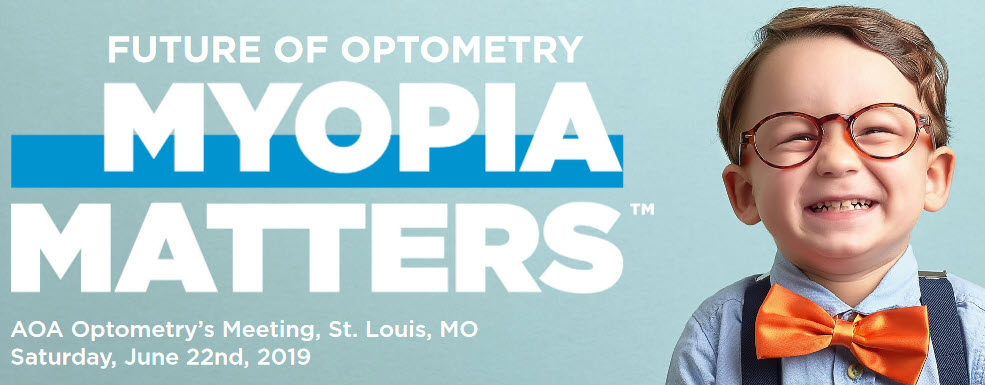By Mario Gutierrez, OD, FAAO
Jan. 15, 2020
There was a time, not long ago, when optometrists could put off providing myopia management services. They could argue that the science on its effectiveness wasn’t fully clear, or that few patients would be open to trying it.
That time has past. The need for myopia management has never been greater, and we know now that treatments like Ortho-K deliver results that may hold life-long benefits for the patient.
New Resource
It is estimated that over one-third of the world’s population is myopic, and by 2050, almost 50 percent will be myopic. By 2050, it is predicted that over 1 billion people will have high myopia. The estimated overall myopia prevalence in the U.S. is over 42 percent in the 12- to 54-year-old age group, almost doubling in the past three decades.1 In U.S. children and teenagers ages 12-17, the overall prevalence of myopia is estimated to be a shocking 34 percent.2
An Expanding Opportunity to Deliver Greater Care
I have provided Ortho-K services for 35 years. My initial patients were Air Force and Navy pilots. When reverse geometry contact lenses were introduced 15 years ago, we started seeing the real benefits of being able to slow down/contain myopia in our younger patients.
Those benefits included enhanced performance in school and extracurricular activities, and, in some cases, greater self confidence. More importantly, we now know that in limiting the worsening of myopia, we are lessening the risk for the patient developing threats to eye health like retinal detachments and glaucoma.
A Practice-Building Opportunity
As you help your patients by providing myopia management services, you will be helping your practice by providing a new avenue for growth.
Other Articles to Explore
Alongside the great benefits to patients, myopia management has provided an additional profit center for our practice. It’s also an effective way to market our practice to families with children. More than just revenue growth, this is an opportunity to create a younger patient base that will potentially stay with you for decades to come, eventually becoming the patients of your younger associate ODs.
It is not expensive to launch myopia management services, nor will you need additional office space. First you need a topographer, and to take a corneal reshaping therapy-type course, preferably a wet lab. I took a course from the Brien Holden Vision Institute, and recommend it.
Staff needs to be trained conceptually on the basics of the “why” of myopia control and on the required clinical skills to help the doctor in the various treatment regimens.
In addition to Ortho-K, you will want to find multifocal contact lenses that assist in myopia control, acquire a fitting set, and find a pharmacy that will compound low strength atropine. At some point you will also want to purchase higher-level technology that allows for better monitoring/follow-up care.
Be sure to charge appropriately for the myopia management services you provide. It’s important that we explain clearly to the patient’s parents that there are additional fees for ongoing treatment and follow-up.
Time to Jump In–Or Direct Patients to an OD that Will
It makes absolutely no sense to not embrace and enthusiastically market myopia control to your current patient base and your local community.
It’s going to be difficult to defend not offering services, which science tells us can help control myopia progression (and reduce the possibility of associated pathology).
For those reasons, if you choose not to offer myopia management services, do the right thing, and refer the patient to an OD practice that does offer these important services.
A Long Way to Go
Unfortunately, despite the many benefits, many ODs still do not offer myopia management services, according to the Myopia Matters report from Jobson Optical Research. While over six-in-ten (62.4 percent) optometrists surveyed said their practices provide myopia management services, surprisingly, almost four-in-ten (37.6 percent) said their practices do not offer myopia care for children.
There is still a common misconception in our profession that the demand is not there for these services. Of the optometrists surveyed in the Myopia Matters report, who do not offer myopia care, two out of three said there is not enough patient demand, and nearly one-in-four said it was too time consuming.
There is hope, however, that the availability of myopia management services is primed for greater growth. Over seven-in-10 of the optometrists surveyed for Myopia Matters, who already provide myopia care, said they are very proactive or proactive in managing children with progressive myopia.
Many opportunities exist to enable optometrists to proactively manage pediatric progressive myopia. Almost two in three in the Myopia Matters report said that increasing parental awareness of the long-term eye health dangers of myopia was the most important enabler.
The wonderful thing about having a myopia reduction program for your practice is there are more and more myopes being produced everyday! There is no lack of patients–but you have to let parents know that you offer services that can really help their children.
References
1 Holden, B. A., Fricke, T. R., Wilson, D. A., Jong, M., Naidoo, K. S., Sankaridurg, P., … & Resnikoff, S. (2016). Global prevalence of myopia and high myopia and temporal trends from 2000 through 2050. Ophthalmology, 123(5), 1036-1042.
2 Vitale, S., Sperduto, R. D., & Ferris, F. L. (2009). Increased prevalence of myopia in the United States between 1971-1972 and 1999-2004. Archives of ophthalmology, 127(12), 1632-1639.
 Mario Gutierrez, OD, FAAO, is the owner of Vision Source-Alamo Hts, P.A. in San Antonio, Texas. To contact him: mariogut@flash.net
Mario Gutierrez, OD, FAAO, is the owner of Vision Source-Alamo Hts, P.A. in San Antonio, Texas. To contact him: mariogut@flash.net


























